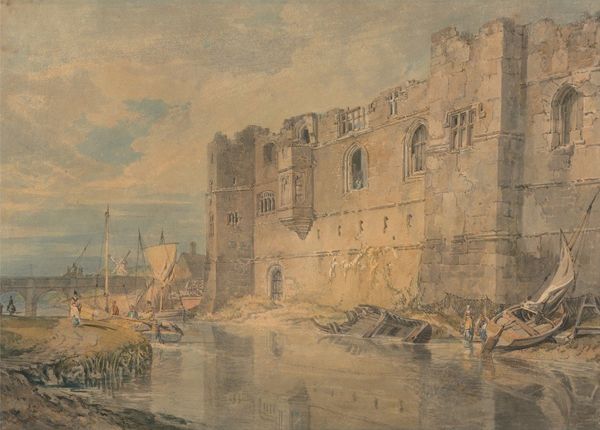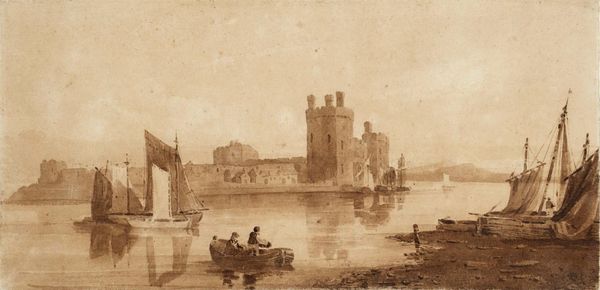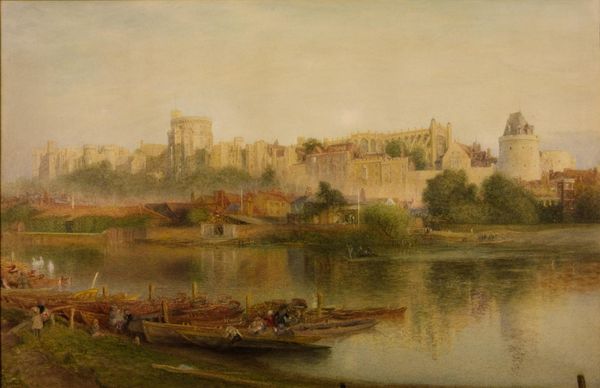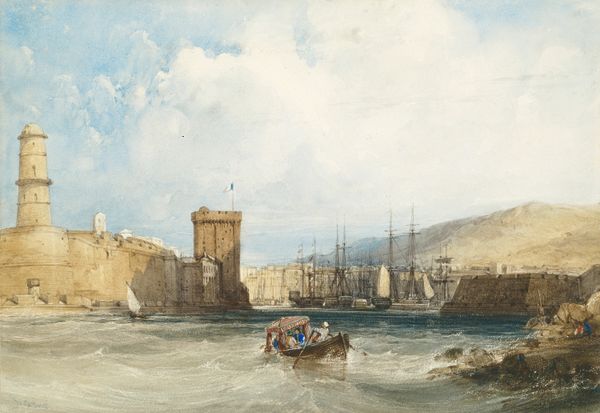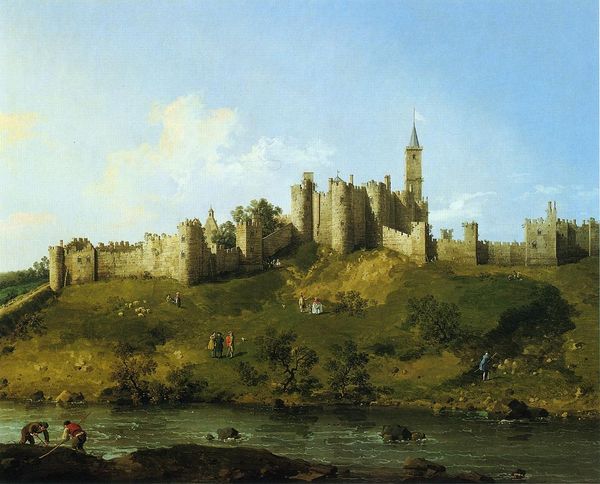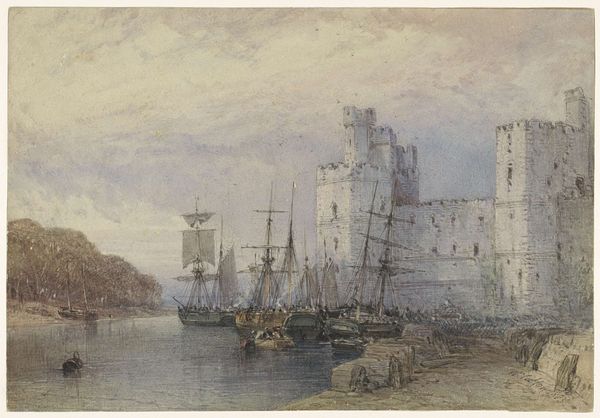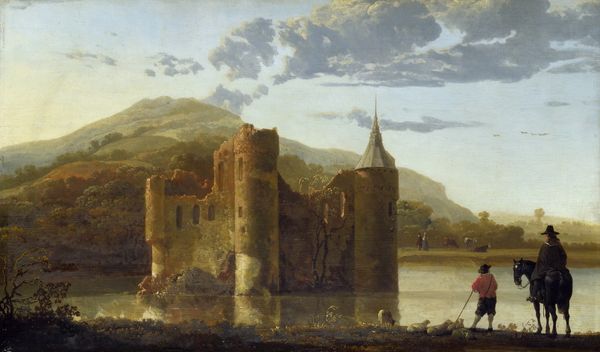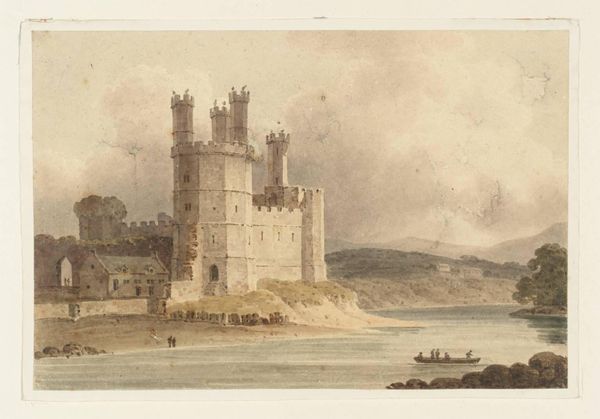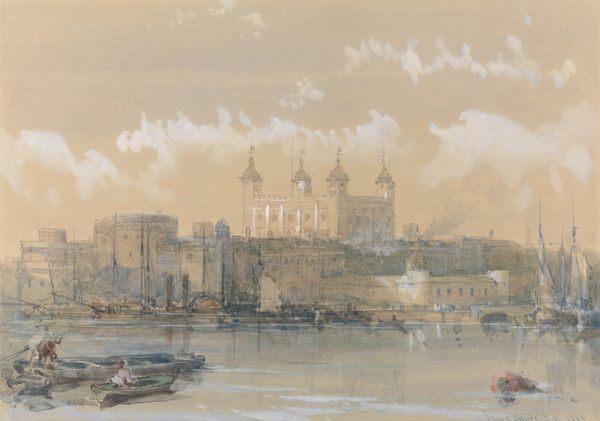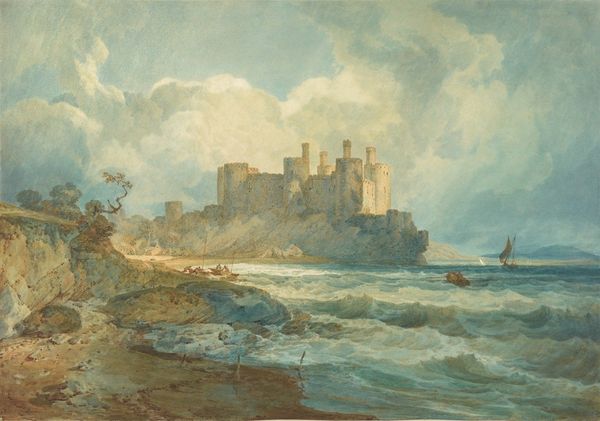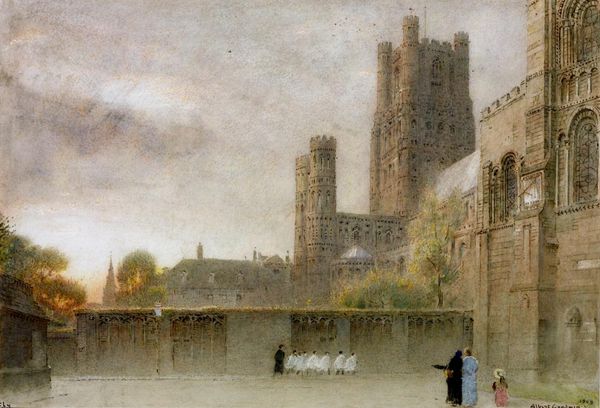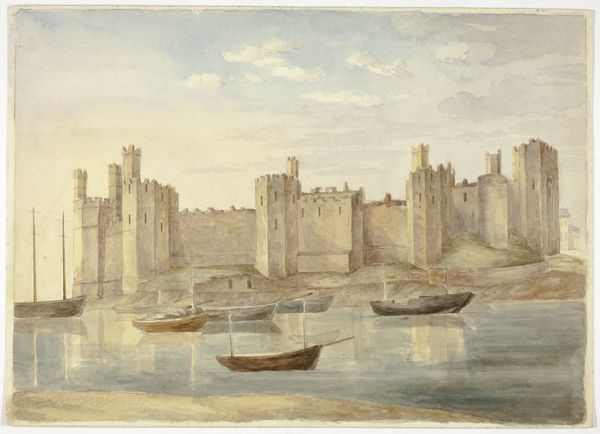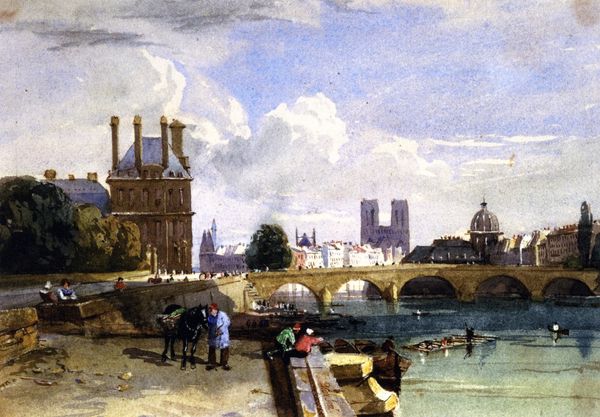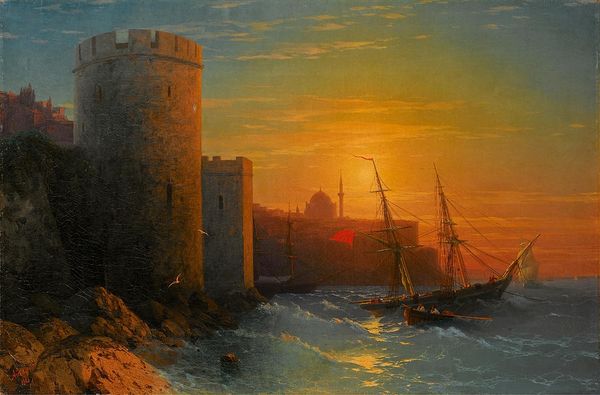
Dimensions: support: 225 x 610 mm
Copyright: © Tate | CC-BY-NC-ND 4.0 DEED, Photo: Tate
Curator: Here we have Charles Spencelayh's "Rochester Castle," part of the Tate Collection. Editor: The muted colors and tight composition create a feeling of gentle serenity. It's quite picturesque. Curator: Spencelayh, born in 1865, painted this scene, capturing not just the castle, but a moment in Rochester's history—its enduring architecture juxtaposed with the daily life along the river. Editor: The horizontal format emphasizes the breadth of the scene, yet the level, almost flat perspective flattens any depth. Is that intentional, or simply naive painting? Curator: Perhaps both! Remember, Spencelayh often depicted everyday life, imbuing it with a quiet dignity. The castle, then, becomes a backdrop to the lives playing out in its shadow. Editor: I see how the castle as a signifier of the past grounds the visual narrative, giving weight to an otherwise unassuming scene. It works. Curator: Exactly. And it reminds us that even grand historical structures are part of an ever-evolving present. Editor: For me, it's the artist's ability to render a complex scene with such calming restraint that makes this painting so compelling. Curator: It’s a testament to the power of art to bridge the gap between history and our own experiences.
Comments
tate 7 months ago
⋮
http://www.tate.org.uk/art/artworks/spencelayh-rochester-castle-n05272
Join the conversation
Join millions of artists and users on Artera today and experience the ultimate creative platform.
tate 7 months ago
⋮
Spencelayh was born and grew up in Rochester, travelling from there each day to the South Kensington School (later renamed the Royal College of Art) throughout his training as an artist. He continued his studies in Paris before returning to England, first exhibiting at the Royal Academy in 1892. For the next sixty-six years, Spencelayh regularly sent canvases to the Royal Academy exhibitions. Spencelayh frequently returned to the cathedral city throughout his career, evidently making sketches for this painting on one of these visits. This landscape is unusual for Spencelayh who, according to the critic of The Manchester Guardian generally painted, 'old codgers - the obsolete slang rises unbidden - in junk-crammed interiors that will be of considerable interest to the social historian of the future' (quoted in Noakes, p.53). This view is from the Strood end of Rochester Bridge, looking across the River Medway to a wide panorama centred on the Norman castle situated on the hill top. The stone keep, built under the guidance of William the Conqueror's architect, Bishop Gundulf, was the principle part of the castle then remaining. At 113 feet (35m) high and 70 feet (22m) square it dominates the surrounding countryside. To the left of the castle Spencelayh includes the Norman cathedral. The monumental square tower, recently having undergone restoration work by Sir Gilbert Scott, overlooks the Kent town. The only activity in the scene is contained in the boat in the foreground which is sailing past the pier. The topographical accuracy of the picture is evidently Spencelayh's foremost concern in this view of his home town. In 1896, one year after this painting was completed, Spencelayh began to exhibit at the Royal Society of Miniature Painters. His early training as a miniature painter is evident from the highly detailed technique of the painting, a skill which earned him the label 'the Human Camera' by his contemporaries (quoted in Noakes, p.37). Spencelayh continued to paint in this way throughout his career despite the popularity of Impressionism at the end of the nineteenth century. Further reading:Aubrey Noakes, Charles Spencelayh and his Paintings, London 1978 Heather BirchallJune 2002
